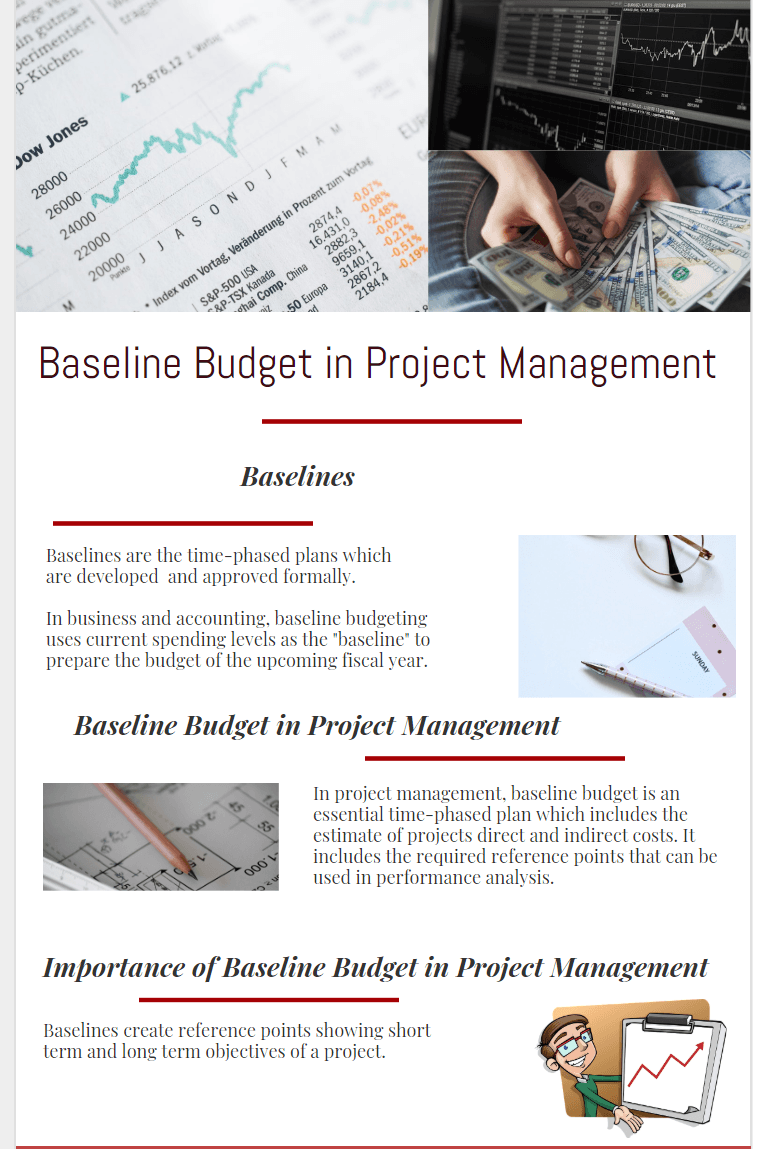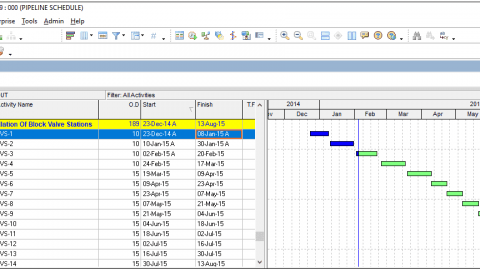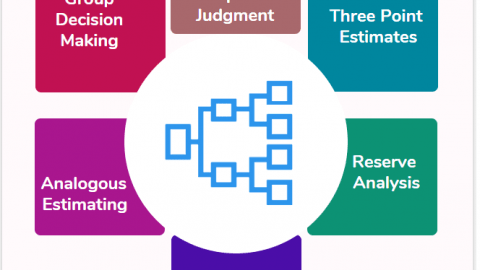Baseline Budget and Its importance in Project Management
Time and cost management are two essential processes for all projects. Baseline schedule and budget are key project management documents that should be created at early stages and kept updated throughout the projects life cycle. Typically, baselines are the time-phased plans which are developed and approved formally. They provide estimates of durations, spending, and revenue which is helpful for project performance measurement. A baseline budget includes a breakdown of expected contracted costs of various deliverables and indirect costs. On the other hand, a baseline schedule demonstrates the details of the durations required to complete various activities. In this article, we will discuss the importance of baseline budget and budget tracking in project management.
Table of Contents
What is a Baseline Budget in Project Management?
The term” baseline budget” is widely used business, contract management, accounting, and project management to refer similar but different concepts.
In contract management, it refers to the amount of the authorized cost of the contract and the estimated cost of the non priced work. In business and accounting, baseline budgeting uses current spending levels as the “baseline” to prepare the budget of the upcoming fiscal year. In project management, baseline budget is an essential time-phased plan which includes the estimate of projects direct and indirect costs. It includes the required reference points that can be used in performance analysis.
What is the Importance of a Baseline Budget in Project Management?
One of the biggest challenges that a project manager must overcome is making proper estimations to create a baseline. If the estimations are not properly made, targets will not be clear. In other words, baselines create reference points showing short term and long term objectives of a project.
A baseline budget may include a cost breakdown structure, unit price analysis, overhead costs, and cash flow. It can be prepared at any detail level based on the project’s size and requirements. Once a detailed baseline schedule is created and approved, cash flow and time-phased plans of the baseline budget is created.
While creating a baseline budget, scope of work, work breakdown structure, indirect costs, project duration, and risks must be taken into consideration. Labor, material, sub-contractor and machinery costs are grouped under the direct costs. Running costs, insurance, depreciation, administration, security costs, staff salaries are grouped under indirect costs. In addition to that, management and contingency reserves should be added to the budget in order to manage risks.
All the cost elements must be listed with a proper detail level in order to create a proper budget. It will be better if you could calculate the cost of all items and tasks separately. For example, if you need various materials to perform just one task, you must budget each material separately.
Changing the Baseline Budget
Baselines should only be changed when there is a change in scope and/or the organization needs a re-baseline. As the project progresses, the project’s scope changes based on the technical requirements or the client’s needs. Once the scope changes, cost items should be calculated according to the new conditions.
New material, equipment, subcontractor and running costs may be added to the budget. In the same way, if the scope is reduced, some of the costs are removed from the budget.
During the execution of the project, one or more tasks may have been underestimated or a ‘significant’ difference between the planned and the actual figures may have been identified. In that case, the organization and the project management team needs a re-baseline.
Budget Tracking
Once you have completed the baseline budget, tracking phase comes. After the approval of the baseline budget, it will be retained as a target. Budget tracking is to calculate and analyze the differences between the planned costs and the actual costs. Earned Value Management (EVM) technique can be used for measuring project cost performance and progress in an objective aspect.
As the project progresses, you will need to make comparisons between planned and the actual figures to determine if you are under or over budget. It is a good practice to track both baseline schedule and baseline cost to understand both schedule and cost performance of the project. If the project is broken into various phases and locations, you must track the cost of both phases and locations.
Summary
Project managers use baselines to understand if their projects are on track or deviated from the plan. If the project’s performance is not properly tracked and monitored, the project will not be completed on time and budget. This will cause the failure of the project.
Simply put, a baseline budget includes a breakdown of all direct and indirect costs of a project. In project cost management, baseline budget is used as a reference to compare the planned and the actual costs. It offers the organization the opportunity to understand the cost performance of the project. Without the baseline, it will not be possible to take corrective and preventive actions when needed.
In this article, we discuss the baseline budget and its importance in project management. Although this term sounds very dry and boring for some people, it is not difficult to create it. There are some techniques available for this purpose. Top-down budgeting and bottom-up budgeting can be used. While creating a budget, list the knowns and unknowns and employ estimation tools to make proper estimations.
If you want to share your experiences or add contributions related to the topic, you can use the comments section given below.
See Also
Top Down Estimating in Primavera P6
External References

Vice President, İntelligent Design & Consultancy Ltd
Over 12 years of global & rich experience in Portfolio & Program Delivery Management in leading & managing IT Governance, PMO, IT Portfolio/Program, IT Products, IT service delivery management, Budget Management, and more.










